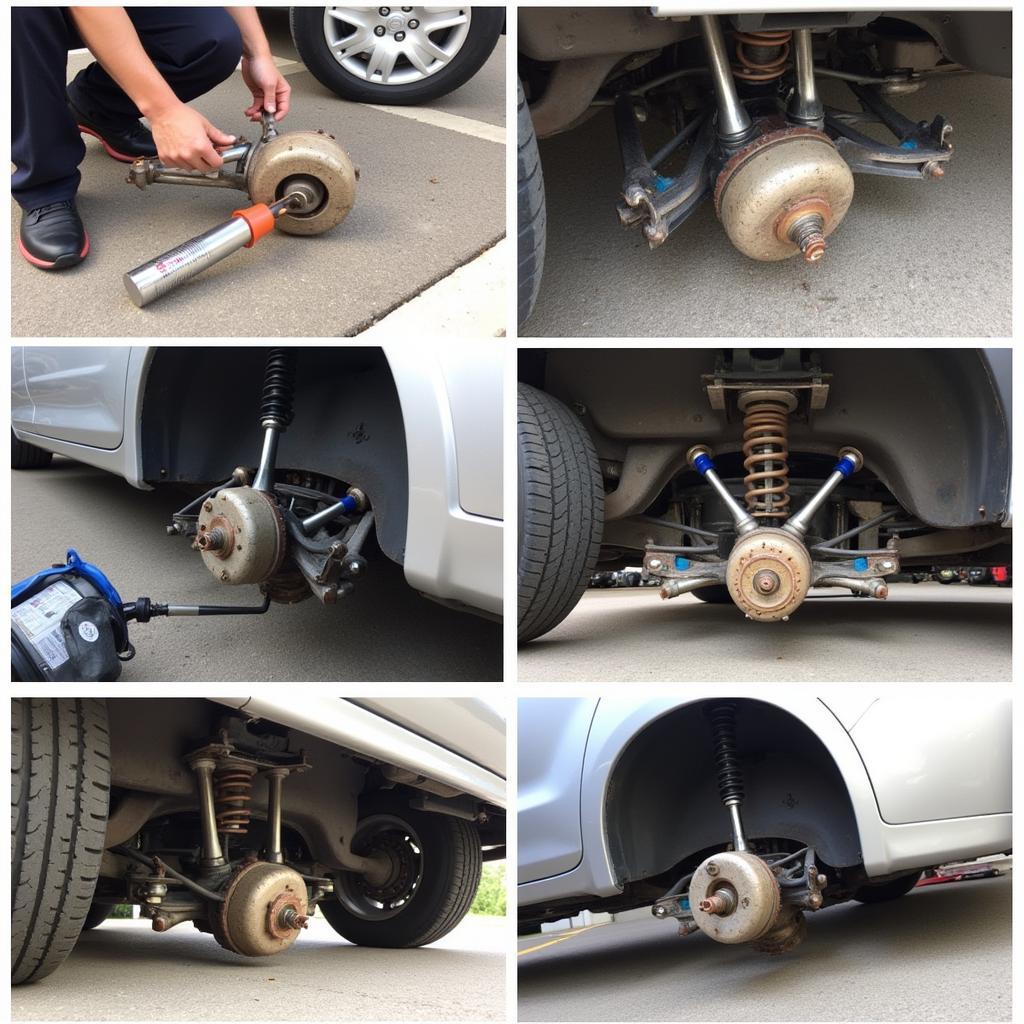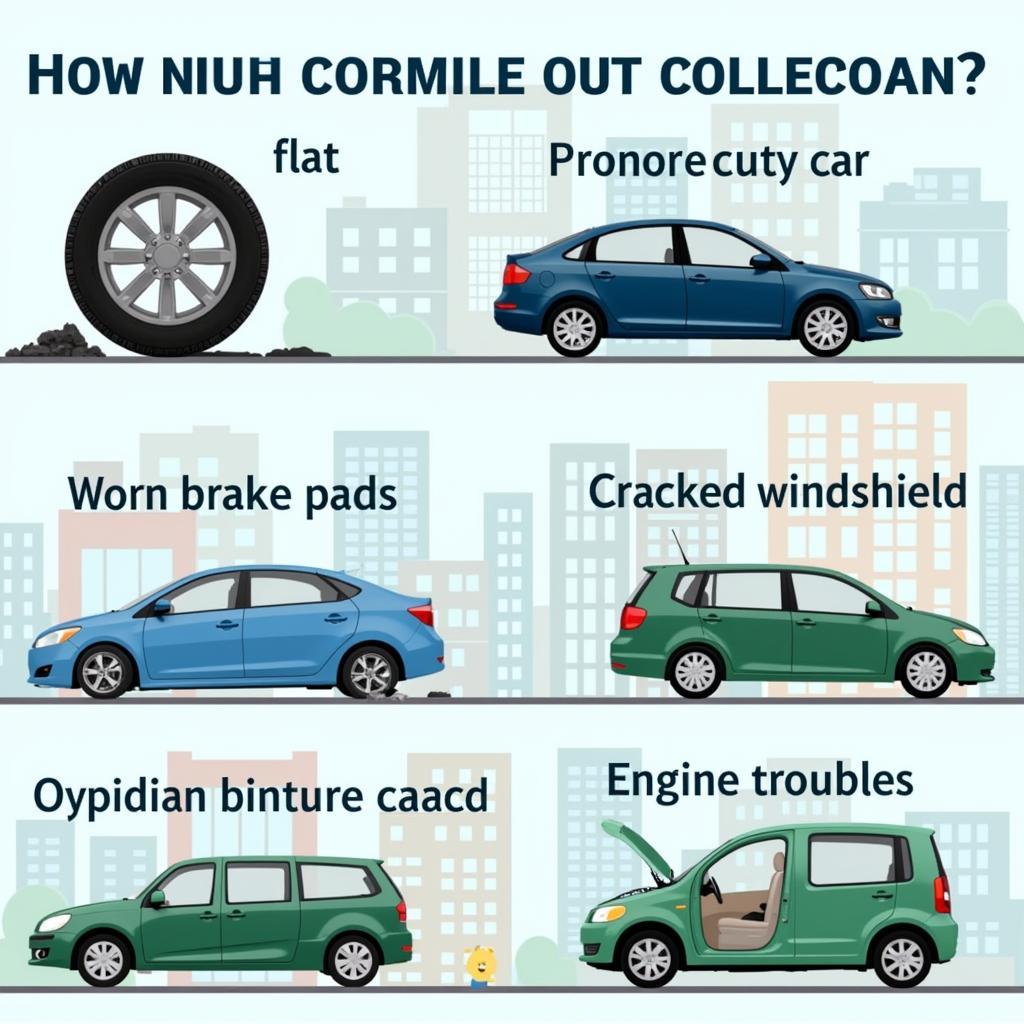Knowing how long it takes to fix a car puncture is crucial, whether you’re a DIY enthusiast or prefer professional help. Several factors influence the repair time, from the type of puncture and tire to the chosen repair method and the technician’s experience. This guide will explore everything you need to know about car puncture repair times, providing valuable insights for car owners, repair shop owners, and automotive technicians.
If your car suffers from a flat tire due to a puncture, several options are available. A temporary fix is using a tire sealant, which can get you back on the road quickly. However, a more permanent solution is patching or plugging the tire. For severe damage, a tire replacement might be necessary. How long each of these methods takes varies considerably.
Understanding Puncture Repair Time Frames
Several factors determine how long it takes to fix a car puncture. The type of puncture, be it a small nail hole or a larger gash, directly impacts the repair time. Similarly, the type of tire – run-flat, standard, or low-profile – can affect the process. The chosen repair method, whether a simple plug, a patch, or a full tire replacement, also plays a significant role. Lastly, the technician’s expertise, availability of tools, and overall shop efficiency can all influence the timeframe.
Factors Influencing Repair Time
-
Puncture Size and Location: A small puncture in the tread is generally quicker to fix than a large sidewall gash. Sidewall punctures often necessitate a tire replacement due to safety concerns, which naturally takes longer.
-
Tire Type: Run-flat tires, designed to be driven on even when punctured, can complicate the repair process, potentially adding to the repair time. Low-profile tires also require specialized tools and care, which can influence the timeframe.
-
Repair Method: A simple plug is the quickest fix, often taking only 15-20 minutes. Patching, a more durable solution, requires dismounting the tire and can take 30-45 minutes. A complete tire replacement, including balancing and alignment, can take an hour or more.
-
Technician Experience: An experienced technician will naturally be quicker and more efficient than a novice. A well-equipped shop with the right tools will also contribute to a faster repair time.
fix paint scratches on car in contra costa
DIY vs. Professional Repair: How Long Does Each Take?
For simple punctures, a DIY plug can be a quick temporary fix, taking around 15-20 minutes. However, for a permanent solution, it’s crucial to consult a professional. A professional patch repair, although more time-consuming (30-45 minutes), provides a safer and more reliable solution. Remember, safety is paramount when it comes to tire repair.
How Long Does a Tire Change Take?
Changing a tire yourself can take anywhere from 15 minutes to an hour, depending on your experience and available tools. However, a professional tire change, including balancing and alignment, can take an hour or more, ensuring the job is done correctly and your car is safe to drive. Balancing and alignment are essential for maintaining tire longevity and preventing uneven wear.
Choosing the Right Repair Method
A quick plug might seem appealing when you’re in a hurry. But for a more permanent and reliable fix, patching is the recommended method. And if the damage is too severe, a full tire replacement is the only safe option. Understanding these options and their associated repair times allows you to make informed decisions.
best fix for peeling car paint
Quick Plugs: The Fastest Option
A tire plug is the quickest way to address a puncture, taking approximately 15-20 minutes. However, it’s essential to consider it as a temporary fix.
“Plugs are a great temporary solution, but always consult a professional for a thorough inspection and potentially a more permanent patch repair,” advises John Smith, Senior Automotive Technician at Speedy Tires.
Conclusion: How Long to Fix That Car Puncture
Understanding how long to fix a car puncture depends on various factors, including the puncture’s severity, the tire type, and the chosen repair method. While a quick plug might be a temporary solution, a professional patch or tire replacement provides long-term safety and reliability. Contact AutoTipPro at +1 (641) 206-8880 or visit our office at 500 N St Mary’s St, San Antonio, TX 78205, United States, for expert advice and assistance with your car puncture repair needs.
do u have to fix paint on a rental car
how to fix small rust spots on car
FAQ
-
How can I tell if my tire needs a patch or a replacement? A professional can assess the damage and recommend the appropriate action. Sidewall punctures often require replacement.
-
Is it safe to drive on a plugged tire for a long distance? A plug is a temporary fix. It’s advisable to get a permanent patch or replace the tire as soon as possible.
-
How much does it cost to fix a car puncture? The cost depends on the repair method and the tire shop.
-
Can I fix a run-flat tire? Some run-flat tires can be repaired, but it depends on the specific tire and the extent of the damage.
-
How often should I check my tire pressure? It’s recommended to check tire pressure at least once a month.
-
What are the signs of a slow puncture? Gradual loss of tire pressure or noticing your tire is low more frequently than usual are signs of a slow puncture.
-
How can I prevent punctures? Avoid driving over debris, maintain proper tire pressure, and regularly inspect your tires for wear and tear.






Leave a Reply